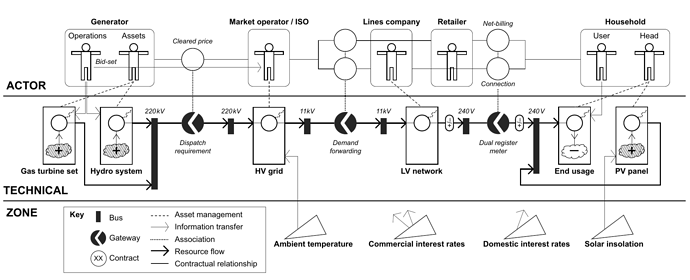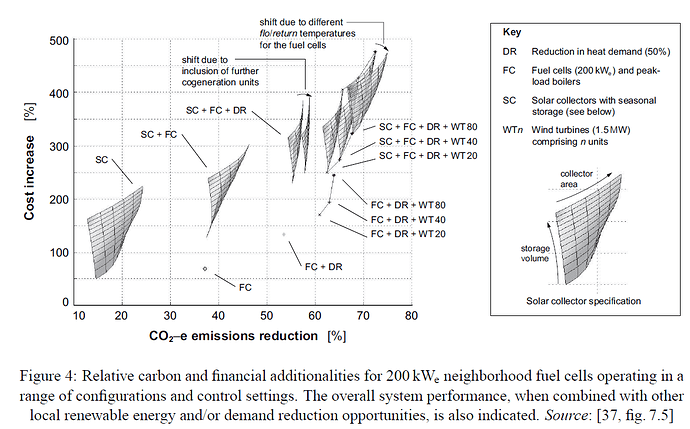Dear openmod community,
As my first post here, I would like to outline my current research (idea) that is related to energy systems modeling/analysis. After providing a brief outline of what I plan to do, I’d like to invite you to provide me with feedback on whether you think the topic fits the scope of this forum and on the idea in general.
Personal background
I’m a PhD student in mechanical engineering, and I also have a BSc/MSc in MechE. I’ve been working mostly on life cycle assessment in the past three years, being involved various research projects and assisting in teaching. More recently, I joined the project flexess, in which I will be assessing the environmental impact of demand side energy flexibility.
Central idea
I’d like to develop a methodology, which should ultimately result in a computational tool, to assess the environmental impact of demand side energy flexibility. In this context, I define energy flexibility measures as interventions which result in a change of electricity demand from the grid (e.g. load shifting, energy efficiency, installing on-site renewables, installing battery storage etc.). The marginal emission factor, calculated as demonstrated by Hawkes (2010) (paywalled/only upon request, unfortunately), is to be calculated with a high temporal and spatial resolution and multiplied with the consumer’s electrical load profile to result in the overall environmental impact.
Target audience
The methodology’s/tool’s target audience are energy managers within organizations, e.g. industrial and commercial enterprises. Their role is to ensure the energy supply for their organization in a cost-effective, reliable manner. My assumption is that in the past, their job has been centered more around procuring energy (negotiating contracts with their energy supplier), whereas now they have to include a lot more options (e.g. rooftop-PV, power-purchase-agreements, storage etc.) into the energy portfolio. Also, their organization is under increasing pressure from customers to reduce the environmental impact of their products/services. I’m happy to receive feedback whether that assessment is correct.
Use cases
The methodology could provide decision support in the following use cases:
- Installing on-site renewable generation capacity
- Installing energy storage
- Load-shifting (e.g. smart charging of EVs, how to operate servers, see Google/Tomorrow partnership
- Energy efficiency measures (reducing overall load)
- Siting: where to implement energy flexibility measure
- & more
General procedure
The methodology consists roughly of the following steps:
- Define goal and use case
- User input (e.g. load profile(s), location(s), planning horizon)
- Where load profiles do not exist (yet), generate synthetic load profiles from simulations
- Calculate marginal emission factor (MEF) from historical energy system data (ENTSO-E) - linear regression of change in emission and change in system load
- For short term (<24 h) prediction of the MEF: use more advanced statistical methods as demonstrated e.g. by Leerbeck et al. (2020), Huber et al. (2020)
- Combine MEF with electrical load profile to calculate total environmental impact
- Calculate environmental impact of equipment etc. to be “offset” (e.g. PV, batteries etc.) using life cycle assessment
- Combine electricity related impact with secondary impact (equipment) to overall impact
Features
- Power-plant specific emission factors
- Not just CO2/global warming potential, but also other environmental impact categories (see. e.g. Siler-Evans et al. (2012), Braeuer et al. 2020
- Include upstream emissions for fuels
- Include electricity imports/exports
- Sub-national spatial resolution
- Open (based on open data, open code, open documentation etc.)
Differences to “traditional” energy systems modeling/analysis
From what I was able to grasp by looking around this forum, and from the little bit of contact I’ve had with the community at the “Jahrestreffen 2021 des Forschungsnetzwerks Energiesystemanalyse” last week, my scope is a little different than the typical energy systems modeling/analysis approach (please correct me if I’m wrong). I try to avoid using average emission factors, as is frequently done in LCA (except for consequential LCA), for assessing the impacts of electricity consumption. I think the MEF provides a better representation of the dynamics within the electricity system. However, I take the system more or less as a black box, and only describe its behavior using energy system data such as time series of generation and system load. I try to avoid having to implement a complex system model such as PYPSA-EUR, if possible - even if I admire what you can do with it (from what I’ve understood so far). Yet, I’m curious to find out which benefits this may provide, and which model may be best suited for the purpose I described. Since I address decision-makers on the electricity consumer side, not policy-makers or grid operators, my focus is more on assessing the impact within the current electricity system (and the near future, but not 2050). I admit that for decisions that involve the implementation of equipment with a service life of 20 years or more (e.g. photovoltaics), this approach has its limitations.
Your thoughts
I hope I was able to lay out my thoughts clearly. Please do let me know which aspects you’d like me to elaborate on further. This is just a rough outline, I have more details but wanted to keep this first post reasonably short. I’m looking forward to hearing about your thoughts on the goal, scope and approach. Also, I tried to follow the forum guidelines, but please let me know if I missed something.
Best
Malte

 ). I’ll briefly summarize it (feedback welcome if I got something wrong), and then add my thoughts.
). I’ll briefly summarize it (feedback welcome if I got something wrong), and then add my thoughts.